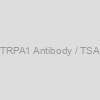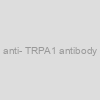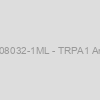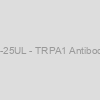Throughout the lipidome oxidized phospholipids (OxPL) type a category of chemically extremely reactive metabolites. OxPL are acutely produced in infected tissue and act as endogenous, proalgesic (pain-inducing) metabolites. They excite sensory, nociceptive neurons by activating transient receptor potential ion channels, particularly TRPA1 and TRPV1.
Below inflammatory circumstances, OxPL-mediated receptor potentials even potentiate the motion potential firing charge of nociceptors. Focusing on OxPL with D-4F, an apolipoprotein A-I mimetic peptide or antibodies like E06, particularly binding oxidized headgroups of phospholipids, can be utilized to manage acute, inflammatory ache syndromes, at the least in rodents.
With a concentrate on proalgesic specificities of OxPL, this text discusses, how concentrating on outlined substances of the epilipidome can contribute to mechanism-based therapies towards major and secondary continual inflammatory or presumably additionally neuropathic ache.
Cannabinoid and Cannabinoid-Associated Receptors within the Myenteric Plexus of the Porcine Ileum
An essential piece of proof has proven that molecules appearing on cannabinoid receptors affect gastrointestinal motility and induce helpful results on gastrointestinal irritation and visceral ache. The intention of this investigation was to immunohistochemically localize the distribution of canonical cannabinoid receptor kind 1 (CB1R) and kind 2 (CB2R) and the cannabinoid-related receptors transient potential vanilloid receptor 1 (TRPV1), transient potential ankyrin receptor 1 (TRPA1), and serotonin receptor 5-HT1a (5-HT1aR) within the myenteric plexus (MP) of pig ileum.
CB1R, TRPV1, TRPA1, and 5-HT1aR had been expressed, with totally different intensities within the cytoplasm of MP neurons. For every receptor, the proportions of the immunoreactive neurons had been evaluated utilizing the anti-HuC/HuD antibody. These receptors had been additionally localized on nerve fibers (CB1R, TRPA1), easy muscle cells of tunica muscularis (CB1R, 5-HT1aR), and endothelial cells of blood vessels (TRPV1, TRPA1, 5-HT1aR).
The nerve varicosities had been additionally discovered to be immunoreactive for each TRPV1 and 5-HT1aR. No immunoreactivity was documented for CB2R. Cannabinoid and cannabinoid-related receptors herein investigated confirmed a large distribution within the enteric neurons and nerve fibers of the pig MP. These outcomes might present an anatomical foundation for extra analysis, supporting the therapeutic use of cannabinoid receptor agonists in relieving motility problems in porcine enteropathies.
Results of activation of pores and skin ion channels TRPM8, TRPV1, and TRPA1 on the immune response. Comparability with results of chilly and warmth publicity
The consequences of pharmacological stimulation of pores and skin ion channels TRPA1, TRPM8, TRPV1 on the immune response are introduced. These results are in contrast with the consequences of various kinds of temperature exposures – pores and skin cooling, deep cooling, and deep heating.
This evaluation permits us to clear the variations within the affect on the immune response of thermosensitive ion channels localized within the pores and skin; (2) whether or not the modifications within the immune response beneath temperature exposures are as a result of these thermosensitive ion channels. Experiments had been carried out on Wistar rats.
For stimulation of TRPM8 ion channel, an utility to the pores and skin of 1% menthol was used, for TRPA1 – 0.04% allylisotiocianate, and for TRPV1 – capsaicin in a focus of 0.001.The antigen binding within the spleen was two-times stimulated by activation of the cold-sensitive ion channel TRPM8 and far weaker by activation of warm-sensitive TRPV1 (by 15%), and one other cold-sensitive ion channel TRPA1 (by 40%).
Solely the stimulation of TRPA1 considerably (by 140%) elevated antibody formation within the spleen, whereas TRPM8 had virtually no impact on this course of, and activation of TRPV1 considerably (by 60%) inhibited antibody formation. Stimulation of the TRPM8 ion channel considerably (by 60%) diminished the extent of IgG within the blood, which is believed to manage of infectious ailments.
The obtained outcomes present that pharmacological activation of the pores and skin TRPA1, TRPM8, TRPV1 ion channels can otherwise have an effect on the immune system. On the epicenter of modifications there have been the antigen binding and antibody formation within the spleen, in addition to the extent of IgG within the blood.
Precisely stimulation of the TRPM8 ion channel determines the modifications within the immune response when solely the pores and skin is cooling, whereas at deep physique heating, the modifications within the immune response are principally decided by the activation of the pores and skin TRPV1 ion channel.
Respiratory virus an infection up-regulates TRPV1, TRPA1 and ASICS3 receptors on airway cells.
Receptors implicated in cough hypersensitivity are transient receptor potential vanilloid 1 (TRPV1), transient receptor potential cation channel, Subfamily A, Member 1 (TRPA1) and acid sensing ion channel receptor 3 (ASIC3).
Respiratory viruses, comparable to respiratory syncytial virus (RSV) and measles virus (MV) could work together straight and/or not directly with these receptors on sensory nerves and epithelial cells within the airways. We utilized in vitro fashions of sensory neurones (SHSY5Y or differentiated IMR-32 cells) and human bronchial epithelium (BEAS-2B cells) in addition to major human bronchial epithelial cells (PBEC) to check the impact of MV and RSV an infection on receptor expression.
Receptor mRNA and protein ranges had been examined by qPCR and movement cytometry, respectively, following an infection or therapy with UV inactivated virus, virus-induced soluble components or pelleted virus. Concentrations of a variety of cytokines in resultant BEAS-2B and PBEC supernatants had been decided by ELISA.
Up-regulation of TRPV1, TRPA1 and ASICS3 expression occurred by 12 hours post-infection in every cell kind. This was unbiased of replicating virus, inside the similar cell, as virus-induced soluble components alone had been adequate to extend channel expression. IL-Eight and IL-6 elevated in contaminated cell supernatants. Antibodies towards these components inhibited TRP receptor up-regulation. Capsazepine therapy inhibited virus induced up-regulation of TRPV1 indicating that these receptors are targets for treating virus-induced cough.

Inflammatory ache management by blocking oxidized phospholipid-mediated TRP channel activation.
Phospholipids occurring in cell membranes and lipoproteins are transformed into oxidized phospholipids (OxPL) by oxidative stress selling atherosclerotic plaque formation. Right here, OxPL had been characterised as novel targets in acute and continual inflammatory ache.
Oxidized 1-palmitoyl-2-arachidonoyl-sn-glycero-3-phosphocholine (OxPAPC) and its derivatives had been recognized in infected tissue by mass spectrometry and binding assays. They elicited calcium inflow, hyperalgesia and induced pro-nociceptive peptide launch. Genetic, pharmacological and mass spectrometric proof in vivo in addition to in vitro confirmed the function of transient receptor potential channels (TRPA1 and TRPV1) as OxPAPC targets.
 TRPA1 Antibody |
|||
| 1-CSB-PA912872 | Cusabio |
|
|
|
Description: A polyclonal antibody against TRPA1. Recognizes TRPA1 from Human. This antibody is Unconjugated. Tested in the following application: ELISA, IHC;ELISA:1:2000-1:5000, IHC:1:25-1:100 |
|||
 TRPA1 Antibody |
|||
| 1-CSB-PA025074GA01HU | Cusabio |
|
|
|
Description: A polyclonal antibody against TRPA1. Recognizes TRPA1 from Human. This antibody is Unconjugated. Tested in the following application: ELISA, WB |
|||
 TRPA1 Antibody |
|||
| DF13269 | Affbiotech | 100ul | EUR 420 |
 TRPA1 Antibody |
|||
| DF13269-100ul | Affinity Biosciences | 100ul | EUR 280 |
 TRPA1 Antibody |
|||
| DF13269-200ul | Affinity Biosciences | 200ul | EUR 350 |
 TRPA1 Antibody |
|||
| E98568 | EnoGene | 100ul | EUR 255 |
|
Description: Available in various conjugation types. |
|||
 TRPA1 antibody |
|||
| 70R-21009 | Fitzgerald | 50 ul | EUR 289 |
|
Description: Rabbit polyclonal TRPA1 antibody |
|||
 TRPA1 antibody |
|||
| 70R-5128 | Fitzgerald | 50 ug | EUR 467 |
|
Description: Rabbit polyclonal TRPA1 antibody raised against the middle region of TRPA1 |
|||
 TRPA1 Antibody |
|||
| GWB-3E2B96 | GenWay Biotech | 0.05 mg | Ask for price |
 TRPA1 Antibody |
|||
| GWB-MM043G | GenWay Biotech | 50ug | Ask for price |
 TRPA1 Antibody / TSA |
|||
| RQ6159 | NSJ Bioreagents | 100 ug | EUR 356.15 |
|
Description: Transient receptor potential cation channel, subfamily A, member 1, also known as transient receptor potential ankyrin 1 or TRPA1, is a protein that in humans is encoded by the TRPA1 (and in mice and rats by the Trpa1) gene. The structure of the protein encoded by this gene is highly related to both the protein ankyrin and transmembrane proteins. The specific function of this protein has not yet been determined; however, studies indicate the function may involve a role in signal transduction and growth control. |
|||
 anti- TRPA1 antibody |
|||
| FNab09013 | FN Test | 100µg | EUR 702 |
|
Description: Antibody raised against TRPA1 |
|||
 TRPA1 Polyclonal Antibody |
|||
| ABP60766-003ml | Abbkine | 0.03ml | EUR 189.6 |
|
Description: A polyclonal antibody for detection of TRPA1 from Human, Mouse, Rat. This TRPA1 antibody is for WB, ELISA. It is affinity-purified from rabbit serum by affinity-chromatography using the specific immunogenand is unconjugated. The antibody is produced in rabbit by using as an immunogen synthesized peptide derived from part region of human TRPA1 protein |
|||
 TRPA1 Polyclonal Antibody |
|||
| ABP60766-01ml | Abbkine | 0.1ml | EUR 346.8 |
|
Description: A polyclonal antibody for detection of TRPA1 from Human, Mouse, Rat. This TRPA1 antibody is for WB, ELISA. It is affinity-purified from rabbit serum by affinity-chromatography using the specific immunogenand is unconjugated. The antibody is produced in rabbit by using as an immunogen synthesized peptide derived from part region of human TRPA1 protein |
|||
 TRPA1 Polyclonal Antibody |
|||
| ABP60766-02ml | Abbkine | 0.2ml | EUR 496.8 |
|
Description: A polyclonal antibody for detection of TRPA1 from Human, Mouse, Rat. This TRPA1 antibody is for WB, ELISA. It is affinity-purified from rabbit serum by affinity-chromatography using the specific immunogenand is unconjugated. The antibody is produced in rabbit by using as an immunogen synthesized peptide derived from part region of human TRPA1 protein |
|||
 TRPA1 Polyclonal Antibody |
|||
| E11-203017 | EnoGene | 100ug/100ul | EUR 225 |
|
Description: Available in various conjugation types. |
|||
 TRPA1 Polyclonal Antibody |
|||
| E912544 | EnoGene | 100ul | EUR 225 |
|
Description: Available in various conjugation types. |
|||
 TRPA1 Conjugated Antibody |
|||
| C37282 | SAB | 100ul | EUR 476.4 |
 TRPA1 Polyclonal Antibody |
|||
| E44H10624 | EnoGene | 100ul | EUR 255 |
|
Description: Biotin-Conjugated, FITC-Conjugated , AF350 Conjugated , AF405M-Conjugated ,AF488-Conjugated, AF514-Conjugated ,AF532-Conjugated, AF555-Conjugated ,AF568-Conjugated , HRP-Conjugated, AF405S-Conjugated, AF405L-Conjugated , AF546-Conjugated, AF594-Conjugated , AF610-Conjugated, AF635-Conjugated , AF647-Conjugated , AF680-Conjugated , AF700-Conjugated , AF750-Conjugated , AF790-Conjugated , APC-Conjugated , PE-Conjugated , Cy3-Conjugated , Cy5-Conjugated , Cy5.5-Conjugated , Cy7-Conjugated Antibody |
|||
 TRPA1 Polyclonal Antibody |
|||
| E-AB-16104-120uL | Elabscience Biotech | 120uL | EUR 240 |
|
Description: Unconjugated |
|||
 TRPA1 Polyclonal Antibody |
|||
| E-AB-16104-200uL | Elabscience Biotech | 200uL | EUR 399 |
|
Description: Unconjugated |
|||
 TRPA1 Polyclonal Antibody |
|||
| E-AB-16104-20uL | Elabscience Biotech | 20uL | EUR 73 |
|
Description: Unconjugated |
|||
 TRPA1 Polyclonal Antibody |
|||
| E-AB-16104-60uL | Elabscience Biotech | 60uL | EUR 143 |
|
Description: Unconjugated |
|||
 TRPA1 Polyclonal Antibody |
|||
| E-AB-62987-120uL | Elabscience Biotech | 120uL | EUR 320 |
|
Description: Unconjugated |
|||
 TRPA1 Polyclonal Antibody |
|||
| E-AB-62987-200uL | Elabscience Biotech | 200uL | EUR 530 |
|
Description: Unconjugated |
|||
 TRPA1 Polyclonal Antibody |
|||
| E-AB-62987-60uL | Elabscience Biotech | 60uL | EUR 200 |
|
Description: Unconjugated |
|||
 TRPA1 Polyclonal Antibody |
|||
| E-AB-62987-each | Elabscience Biotech | each | Ask for price |
|
Description: Unconjugated |
|||
 OACD08032-1ML - TRPA1 Antibody |
|||
| OACD08032-1ML | Aviva Systems Biology | 1ml | EUR 669 |
 OACD08032-100UL - TRPA1 Antibody |
|||
| OACD08032-100UL | Aviva Systems Biology | 100ul | EUR 199 |
 Rabbit Polyclonal TRPA1 Antibody |
|||
| TA309920 | Origene Technologies GmbH | 100 µl | Ask for price |
) Polyclonal TRPA1 Antibody (Internal) |
|||
| APR13791G | Leading Biology | 0.05mg | EUR 580.8 |
|
Description: A polyclonal antibody raised in Rabbit that recognizes and binds to Human TRPA1 (Internal). This antibody is tested and proven to work in the following applications: |
|||
) Polyclonal TRPA1 Antibody (Internal) |
|||
| APR13792G | Leading Biology | 0.05mg | EUR 580.8 |
|
Description: A polyclonal antibody raised in Rabbit that recognizes and binds to Human TRPA1 (Internal). This antibody is tested and proven to work in the following applications: |
|||
 TRPA1 Rabbit Polyclonal Antibody |
|||
| 53381 | SAB | 100ul | EUR 439 |
 TRPA1 Rabbit Polyclonal Antibody |
|||
| 55544 | SAB | 100ul | EUR 439 |
 TRPA1 Rabbit Polyclonal Antibody |
|||
| ES11963-100ul | ELK Biotech | 100ul | EUR 124 |
|
Description: A Rabbit Polyclonal antibody against TRPA1 from Human/Mouse/Rat. This antibody is tested and validated for WB, ELISA, WB, ELISA |
|||
 TRPA1 Rabbit Polyclonal Antibody |
|||
| ES11963-50ul | ELK Biotech | 50ul | EUR 74 |
|
Description: A Rabbit Polyclonal antibody against TRPA1 from Human/Mouse/Rat. This antibody is tested and validated for WB, ELISA, WB, ELISA |
|||
 TRPA1 rabbit polyclonal antibody |
|||
| RA14135-100 | Origene Technologies GmbH | 100 µl | Ask for price |
 TRPA1 Rabbit Polyclonal Antibody |
|||
| E10G11394 | EnoGene | 100 μl | EUR 275 |
|
Description: Biotin-Conjugated, FITC-Conjugated , AF350 Conjugated , AF405M-Conjugated ,AF488-Conjugated, AF514-Conjugated ,AF532-Conjugated, AF555-Conjugated ,AF568-Conjugated , HRP-Conjugated, AF405S-Conjugated, AF405L-Conjugated , AF546-Conjugated, AF594-Conjugated , AF610-Conjugated, AF635-Conjugated , AF647-Conjugated , AF680-Conjugated , AF700-Conjugated , AF750-Conjugated , AF790-Conjugated , APC-Conjugated , PE-Conjugated , Cy3-Conjugated , Cy5-Conjugated , Cy5.5-Conjugated , Cy7-Conjugated Antibody |
|||
 Antibody) Polyclonal TRPA1 (extracellular) Antibody |
|||
| APR13790G | Leading Biology | 0.05ml | EUR 790.8 |
|
Description: A polyclonal antibody raised in Rabbit that recognizes and binds to Human TRPA1 (extracellular) . This antibody is tested and proven to work in the following applications: |
|||
 Anti Mouse TRPA1 Polyclonal Antibody |
|||
| KM120 | Sceti | each | EUR 778.8 |
|
Description: The Anti Mouse TRPA1 Polyclonal Antibody is available in Europe and for worldwide shipping via Gentaur. |
|||
 ARP35205_P050-25UL - TRPA1 Antibody - middle region |
|||
| ARP35205_P050-25UL | Aviva Systems Biology | 25ul | EUR 99 |
) ARP35205_P050 - TRPA1 antibody - middle region (ARP35205_P050) |
|||
| ARP35205_P050 | Aviva Systems Biology | 100ul | EUR 389 |
 Trpa1/ Rat Trpa1 ELISA Kit |
|||
| ELI-23163r | Lifescience Market | 96 Tests | EUR 1063.2 |
 rabbit polyclonal antibody) TRPA1 (N-term) rabbit polyclonal antibody |
|||
| RA25013-100 | Origene Technologies GmbH | 100 µl | Ask for price |
 TRPA1 |
|||
| E8ER1803-91 | EnoGene | 100ul | EUR 275 |
|
Description: Available in various conjugation types. |
|||
Remedy with the monoclonal antibody E06 or with apolipoprotein A-I mimetic peptide D-4F, capturing OxPAPC in atherosclerosis, prevented inflammatory hyperalgesia, and in vitro TRPA1 activation. Administration of D-4F or E06 to rats profoundly ameliorated mechanical hyperalgesia and irritation in collagen-induced arthritis. These knowledge reveal a clinically related function for OxPAPC in irritation providing remedy for acute and continual inflammatory ache therapy by scavenging OxPAPC.

